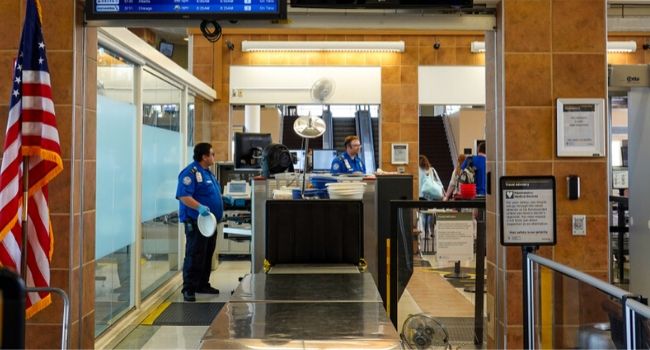
TSA Faces Record-Low Numbers of Travelers, Coronavirus Outbreak Among Employees
More than 370 employees have tested positive for COVID-19 as TSA security screeners experience nearly empty airports due to the pandemic.
- By Haley Samsel
- Apr 15, 2020
The COVID-19 pandemic has taken a massive toll on airline travel, leading to a record low in airport screenings conducted by the Transportation Security Administration.
Only 90,510 passengers were screened by TSA agents on April 12. Compare that to the number of travelers who were screened on the same day in 2019: 2,446,801 people, according to Fox News.
The new record came only four days after the previous record low was set on April 8, when the numbers dipped beneath 100,000. The numbers actually increased on April 9 and 10 to over 100,000 per day but dipped back into the 90,000s over the course of the two following days.
TSA is also grappling with the deaths of three TSA employees due to coronavirus complications. As of April 13, 373 employees had tested positive and 23 have recovered, USA TODAY reported.
The first employee, Francis “Frank” Boccabella III of Newark, died on April 2 at 39 years old. He worked for the TSA since 2004, most recently serving as an explosive detection canine handler.
The following day, Alberto Camacho, a branch manager at the TSA Systems Integration Facility in Arlington, Virg., died from coronavirus. He first joined the TSA in 2005 and was a transportation security industry veteran of more than 20 years, according to a TSA press release.
“Every day, he worked closely with TSA’s partners to ensure the nation’s aviation security technology remained cutting edge and ahead of the threat," a TSA statement reads. "We offer our heartfelt condolences to Alberto’s family, friends and his TSA colleagues."
Dian Phipps, who most recently worked at Atlanta’s Hartsfield-Jackson Airport, died on April 13, becoming the third agency employee to die from the virus. His 14-year career in airport security took him from the Virgin Islands to Juneau International Airport in Alaska, the agency said.
The TSA described him as a “kind and humble person who was always fun to be around, as well as being a talented singer.”
"For over 14 years Dian dedicated his career to protecting the traveling public, and his contributions to TSA and our mission will not be forgotten," the TSA statement reads.
The agency said that it is committed and determined to work “ever more closely” with its partners to stop the spread of coronavirus. In March, leading TSA union representatives pushed for more effective masks for airport security screeners, fearing that spread could be imminent.
About the Author
Haley Samsel is an Associate Content Editor for the Infrastructure Solutions Group at 1105 Media.